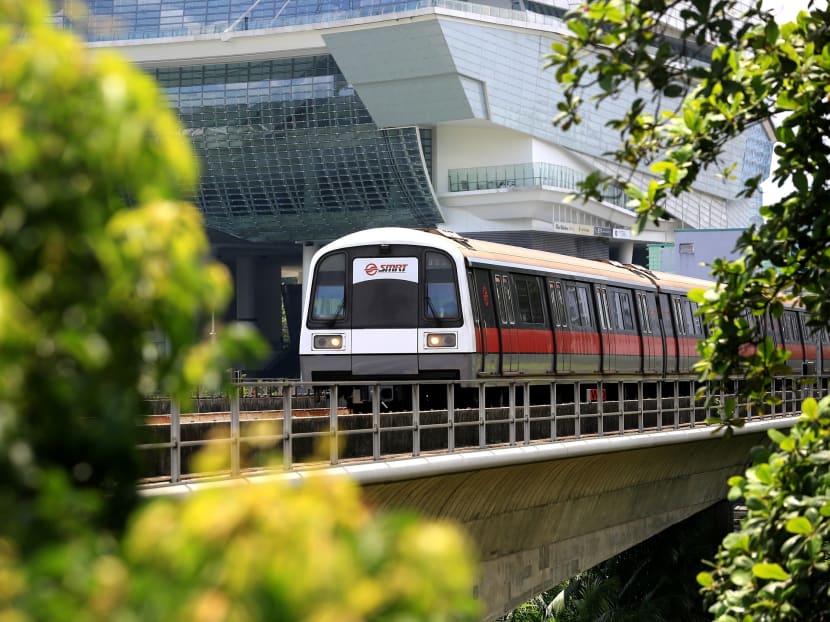Early warning system for rail faults being explored
SINGAPORE — The Land Transport Authority (LTA) and the transport operators are examining the idea of putting in place predictive and condition monitoring tools to help pinpoint abnormalities in the rail systems for early intervention.
SINGAPORE — The Land Transport Authority (LTA) and the transport operators are examining the idea of putting in place predictive and condition monitoring tools to help pinpoint abnormalities in the rail systems for early intervention.
They are also working together to review incident response measures and recovery plans, with technical exercises in a “simulated live operating environment” on the cards.
These are some of the initiatives in the pipeline following a slew of recommendations by an independent advisory panel (IAP), which was appointed in December last year to review the power supply system for all MRT and LRT lines. Among other things, the panel recommended more frequent inspections of assets and replacement of components, as well as the adoption of new monitoring technologies.
In a press release on Tuesday (April 19), LTA said the panel had completed its work and put up recommendations to improve the resilience of the system in the near-term. In the longer term, the IAP recommended that the design of the rail system should provide for a maximum downtime of five minutes during faults, with system recovery achieved within 20 minutes.
The panel comprised international specialists in power supply systems, including representatives from an overseas operator and equipment design specialists. Its suggestions were related to foresight - or the ability to anticipate, prevent, mitigate potential problems - system robustness and rapid recovery.
LTA said the IAP “recognises that the power supply system has achieved a high availability”. However, the panel recommended that the performance of the power supply system be assessed against “a more holistic perspective of system resilience”. “The interdependencies between the power supply system and adjoining systems, such as trackways and trains, should be considered in operating and maintenance procedures,” LTA said.
LTA chief executive officer Chew Men Leong noted that the authority has already implemented some of the IAP’s recommendations. For example, Voltage-limiting Devices (VLD) have been installed on new lines – starting with the Downtown Line – and these will be retrofitted on existing lines.
“At the same time, we will also look at the other areas of improvement such as improving the recovery process to shorten the duration of an incident,” Mr Chew said.
Among other things, LTA is also working with the operators on their replacement schedule for ageing power assets, as well as to step up their maintenance regime until the relevant power assets are replaced. To enhance system robustness, LTA is implementing the Intelligent Fault Identification System for the Downtown Line, Thomson-East Coast Line and future lines. This technology – which has been successfully tested - will be expanded to all existing lines, as per IAP’s recommendation.
Together with the relevant agencies, LTA will be looking at ways to enable faster recovery of power supply in the event of a power failure. A database of previous power faults will also be established.
Assistant Professor Terence Fan, a transport specialist at the Singapore Management University, said the IAP’s longer term recommendations on maximum downtime and system recovery duration are certainly feasible. But he noted that the system’s design and whether it works as intended are separate matters. “Even when the power system is working, that does not mean that train service itself will have to resume within 15 minutes,” he pointed out.
Still, the power system is critical to recovery efforts when disruptions hit, he added. He described the recommendations as a good starting point.
“I especially like the fact that the recommendations involve some outcome performance expectations, and not simply about assigning what to do’s,” he said. On the issue of cost and maintenance, Dr Walter Theseira, a senior lecturer at SIM University. said the challenge with rail financing is the need to “collect fares over an extended period of time to pay for the expected future cost of replacements”.
He said: “When replacements are more expensive than expected, when reliability expectations are higher than previously, or when maintenance was deferred, the fare collection might not be enough to cover the costs. In that case, a more fundamental problem arises of how to pay for reliability, and either fares must go up, or the Government must put more public funding into the system.”
Meanwhile, the North-South Line (NSL) reached on Monday a milestone of 100 days without any major disruption. Writing about this on his blog on Tuesday, Transport Minister Khaw Boon Wan noted the “especially daunting” challenges for Singapore’s rail system - it is expanding rail capacity, upgrading the power system and replacing ageing assets, even as it seeks to stabilise the existing system and make it more reliable. Many of these engineering tasks have to be carried out during the three to four engineering hours per day, he reiterated.
Last week, SMRT announced that services at 13 MRT stations on the NSL and East-West Line will start running an hour later at 7am on Sundays between June 5 and Dec 18, due to scheduled renewal and maintenance works. “We will monitor the effectiveness of this initiative and if needed, we may extend it further. We will try to minimise the inconvenience caused, and we hope that commuters will be understanding,” Mr Khaw said. ADDITIONAL REPORTING BY CLIFFORD LEE







